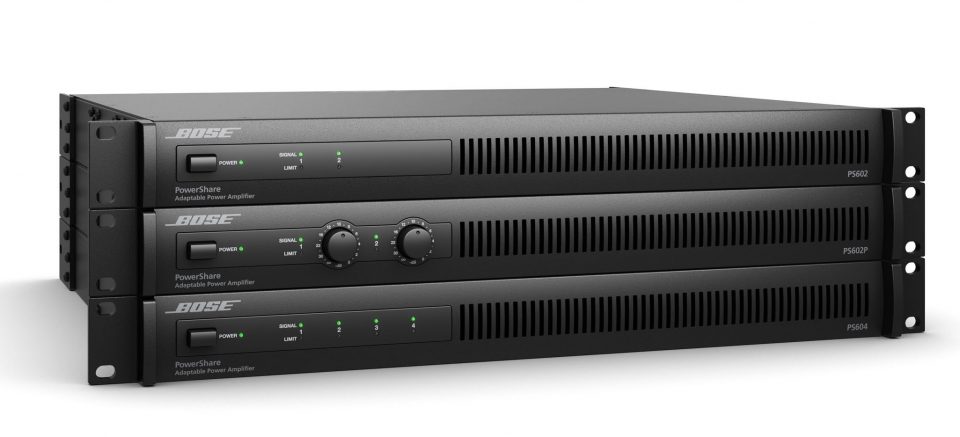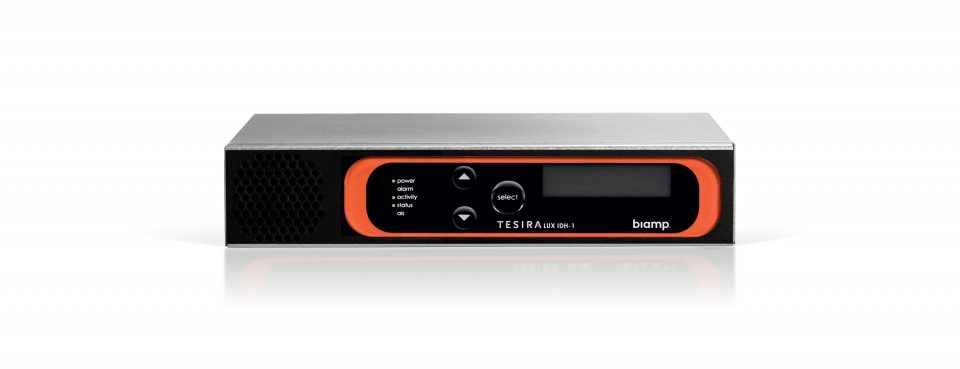InfoComm 2016: Sound for Sports Venues Is Increasingly Complex
Systems must offer both concert-quality audio and intelligibility
Story Highlights
On a day when Justin Bieber’s latest brawl led the Google News’ sports-news round-up ahead of Game 4 of the NBA Finals, it was just one more reminder that the line between sports and entertainment has become nearly transparent. That was also evident at InfoComm 2016, which concluded Friday at the Las Vegas Convention Center, where dozens of stadium-scaled sound-system products demonstrated that the bass is loaded even when the bases aren’t and that they’re ready for concert-level sound.
“We’re not seeing separate systems anymore,” said Jeff Taylor, VP, Americas, Vue Audiotechnik, which has systems installed at the John Lance Arena at Pittsburgh State University (Kentucky) and the Bojangles Coliseum in Charlotte, NC. “Every venue is demanding that the [main PA] system work for multiple applications.”
According to Dan Palmer, head of integration, L-Acoustics, success in the entertainment industry has helped the brand gain market share in sports-venue installations because it’s so often specified as the touring-sound system for concerts that also use those venues.
“Our experience on the touring side has allowed us to better understand the needs of that type of facility,” he explained. The company markets systems described as “sports entertainment sound system” packages, such as those installed at the AT&T Center, home of the San Antonio Spurs, and the Toyota Center, which hosts the Houston Rockets; another system installation is under way at the Arizona Cardinals’ stadium in Phoenix. Citing other events that combine music and sports, such as the Olympics, for which L-Acoustics has provided systems, he said, “Stadium sound systems need to reflect the requirements of [contemporary] music.”
All About That Bass
Although those requirements include the ability to hit high levels of SPL while retaining a high degree of intelligibility for announcements, they also have a growing emphasis on low-frequency response. Danley Sound Labs President/CEO Mike Hedden stood prudently to one side as the company’s BC-418 subwoofer pounded articulately during a demo in one of the rooms at the convention center. He said demands for louder yet intelligible installed sound in stadiums and arenas has led to challenges as systems reach the edge of their envelopes.
“Bandwidth and space have become perhaps the biggest issues,” he said, noting that ever larger video displays are beginning to crowd out sound systems when the two need to be combined for space reasons, particularly in huge collegiate stadiums. As a result, sound-system components have been pressed to become smaller without giving up their power.
“The issues are bandwidth, volume, and space,” he said, adding that sound-system physical profiles atop open stadiums also have to keep wind in mind to avoid “sail” effects. “Whoever can do low, little, and loud wins.”
Crowded Field
The number of sports venues continues to increase, and so does the number of players in the sound market, another trend reflected at InfoComm 2016. The show was the largest to date: a record 1,000 exhibitors including 211 new ones, a number of which were sound-system providers. And the market is seeing more competition from overseas brands. Jaime Villegas, GM at D.A.S., which is based in Valencia, Spain, said that the U.S. market is big enough to accommodate a large number of manufacturers but that consultants are the key to entry.
“The biggest challenge we face [here] ,” he explained, “is to convince consultants to work with a new brand, to make time to see if a new product will deliver what they need. It’s about getting the opportunity to show them we can do it better.” However, he added, the small to midsize collegiate and high school markets, all of which are pursuing improved sound environments, offer tremendous potential.
John Newhouse, director of North American sales at speaker manufacturer EAW, which will put one of its MK series systems into the new Atlanta Braves SunTrust Park stadium next year, pointed to perhaps the ultimate synergy at the soon-to-open Ford Center at The Star, a $250 million facility whose 12,000-seat stadium — which will also feature a 60-ft. video display — will be shared by the Dallas Cowboys as a practice field and eight high school teams in the Frisco Independent School District in Allen, TX.
On the Network
Networked audio continued its steady march into the mainstream at InfoComm 2016, exhibited by such companies as Focusrite, d&b audiotechnik, Crestron, and Evertz AV. Audinate, parent of market-leading Dante format, held its sixth-annual Dante AV Networking World education and workshop event during the show. It featured in-depth training with two separate tracks: one for attendees new to Dante, the other for more-experienced users. Dante also introduced a new certification program, which provides an avenue for design consultants, integrators, and others to promote their proficiency in building, operating, and supporting Dante networks of various sizes.

Bose PowerShare adaptable power amplifiers are available in three models, each providing shareable 600 W.
The following were among the notable products introduced:
- The Bose PowerShare line of adaptable power amplifiers comprises three 1RU models: two- and four-channel fixed-install models (PS602 and PS604) and one two-channel portable amplifier (PS602P). Each delivers 600 W of power that can be shared across all output channels. Onboard configurable loudspeaker processing and direct access to zone controllers eliminate the need for an additional signal processor in many installations, and outstanding audio performance and reliability are assured with patented technologies inherited from the field-proven PowerMatch line.
- Biamp Systems’ TesiraLUX introduces low-latency, 4K networked video distribution to the Tesira platform. The solution transports both audio and video signals over a single network through AVB/TSN. TesiraLUX supports video formats including 4096×2160 at 60 Hz, high dynamic range (HDR), and the Rec. 2020 color space. It can accept video at up to 16-bit color depth with 4:4:4 chroma subsampling and supports eight channels of embedded PCM audio, which can be broken out to be routed and processed independently.

